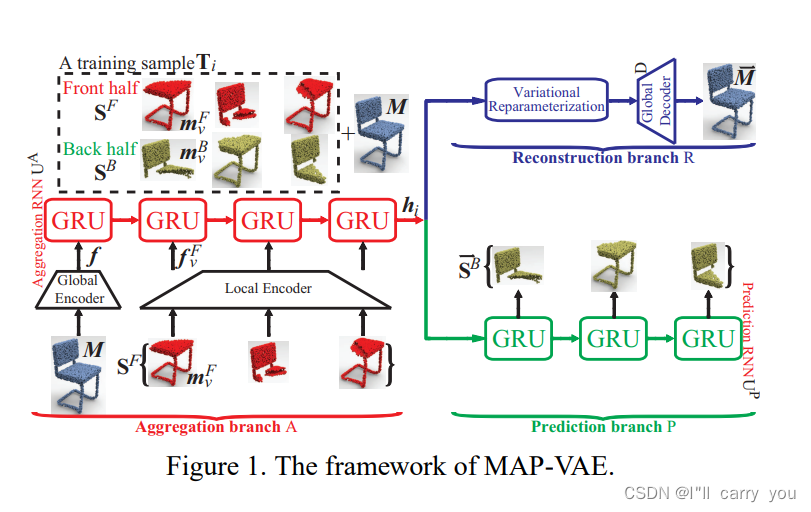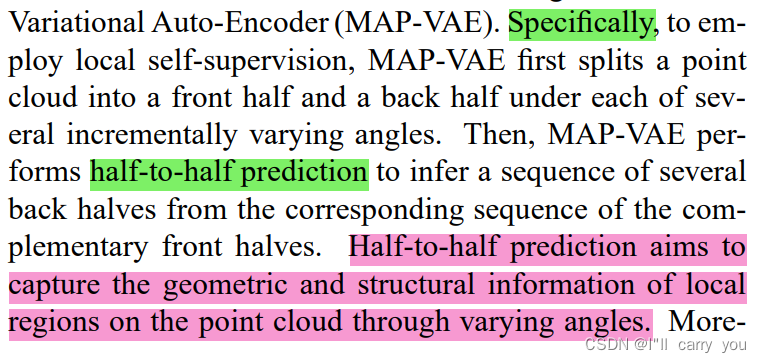1. 四个问题
1. 解决什么问题
当前self-reconstruction 主要learning global geometry,未能有效探索 local geometry。探索无监督 学习local geometry又缺乏 有效并且语义(semantic)的局部结构(local structure) 监督 信号
Because of lacking effective and semantic local structure supervision, however, error may accumulate in the local structure learning process, which limits the network’s ability in 3D point cloud understanding.
2. 用了什么方法解决

三条分支:在3. Overview有详细介绍
- (通用)branch A:用RNN 来聚合所有特征
- (上面)branch R:重建整体,global ,带VAE?能够产生更多的feature space
Self-reconstruction is started from a variational feature space, which enables MAP-VAE to generate new shapes by capturing the distribution information over training point clouds in the feature space
- (下面)branch P:把原始点云输入分割成前面一半和后面一半,half-to-half prediction
We introduce multi-angle analysis for point clouds to mine effective local self-supervision, and combine it with global self-supervision under a variational constraint.
3. 效果如何
ModelNet上的效果:

segmentation on Shape part dataset(主要对比LGAN? 没看过…)

4. 还存在什么问题
?
2. 论文介绍
3. 参考资料
4. 收获
研究动机?:直观地说,从不同角度观察点云,可以明确显示不同形状区域之间的对应关系和关系,即每个视图中形状的前半部和后半部之间的对应关系
创新点:?
- multi-angle:角度的划分也有讲究,没怎么看
- variational constraint:VAE?变分编码器?能够产生更多的 形状(VAE的作用)
提供了一个新的代理任务:1.划分一半预测一半;2.重建整体(常见)
关键词:semantic, local structure


